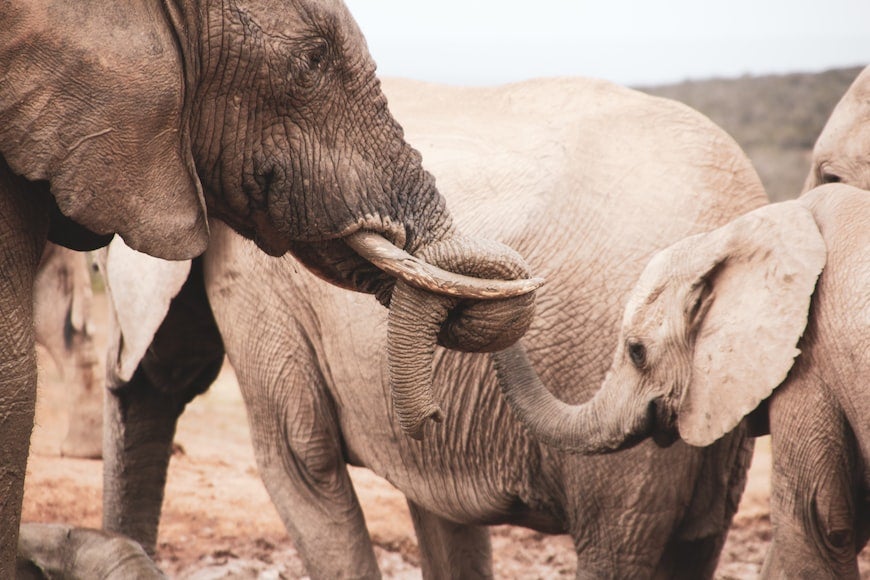In the south east corner of Zimbabwe, chillies keep elephants away
A partnership between the government, external donors, and park managers leaves people better off while reducing human wildlife conflict

By Farayi Machamire for Zim Morning Post
Luckmore Kazamula, 38, was a frequent traveller to South Africa where he undertook menial work, far removed from dryland farming which dominates his home in the town of Chiredzi on the borders of Zimbabwe’s second-largest National Park, Gonarezhou.
There, hot, humid, long summers coupled with human wildlife conflict made making a living in the remote southeast corner of Zimbabwe an uphill task.
Gonarezhou National Park is largely unfenced. With communities living directly adjacent to the Park in many areas, conflict between humans and animals are inevitable.
However, a project of growing chilli peppers facilitated by the Gonarezhou Conservation Trust and backed by Kacholo – a farming partner of fast-food chain Nando’s – is among various initiatives helping people to coexist with their neighbouring wildlife.
Growing then selling the peppers creates an alternative income, reducing the need for people to unsustainably harvest natural resources like timber for charcoal or small animals for bushmeat.
At the same time, part of the produce from the income-generating solution is mitigating human wildlife conflict.
When compacted in blocks or mixed with cow dung and used oil, and burned, the chilli’s pungent smell creates a stinging sensation that repels most wildlife, including elephants.
Kazamula is among the farmers who have signed up to the farming initiative as outgrowers for both its economic benefit and mitigation of human and wildlife conflict.
“The project has been a game changer. We are now concentrating on making a living and this
also helps in that communities have no urge to poach wildlife,” Kazamula says.
“Personally, I hope this project continues so that I don’t go back to working menial jobs in a foreign land. This time last year I was doing tomatoes and sorghum farming as well but they were not able to sustain my family because I had no consistent market.”
Eneth Marambire, 48, of Muhlanguleni Village, a few kilometres away from Kazamula, recently bought a motorbike from proceeds of chilli farming.
Several small scale farmers make up a combined 40 hectares on which chilli pepper farming is currently taking place in the south east lowveld.
“I used to farm maize and beans but when GCT introduced us to Kacholo, I started concentrating more on chilli farming. And since I started in October last year it’s been going well to the point that I have been able to purchase a solar system to power my water and I also purchased a motorbike,” she says.
“To be frank, I am not concerned with what my husband earns because I am busy making ends meet through this project.”
Poverty and food insecurity is a challenge for a large section of the communities surrounding Gonarezhou National Park, and life is even harder for vulnerable groups such as widows and single mothers.
GCT Community Liaison Officer Herbert Pikela said while the project was started with intention to mitigate human-elephant conflict, it has now morphed into a way of making a living for dozens of households.
“We started off by buying chilli [to deter elephants] from villages far away from Gonarezhou National Park. (But then) we started to look at how best we could introduce chilli farming within areas bordering the national park,” he said.
“Our focus was on trying to mitigate human elephant conflict but we later realised that chilli is actually a cash crop. So GCT facilitated the introduction of chilli farming in partnership with Kacholo – who provide assistance and training at every step of the way as well as inputs in the form of fertiliser and crop protection products. They also buy the produce at a competitive price.
“We were targeting elephant and human conflict hot zones but it turned out to be a livelihood project and human wildlife conflict turned out to be secondary.”
More farmers taking up chilli production in areas surrounding Gonarezhou National Park is a boost to the park which has been experiencing a spike in elephant crop-raiding incidents from fewer than 50 reported incidences in 2019 to just under 250 in 2022.
During the same time, the national park recorded the species causing problems to have been 84 percent elephant, 14 percent hippopotamus while bush pig, buffalo and chacma baboon account for the two percent.
The crop species raided have been sorghum accounting for 41 percent of the reported incidences and maize accounting for 36 percent.
GCT Area Manager Evious Mpofu says apart from chilli bricks, GCT has been implementing a number of mitigation and reaction efforts towards human wildlife conflict.
These include community member involvement and capacitation, recording of incidences and data analysis to understand conflict, translocation of problem animals as well as lethal and no lethal control measures.
The Gonarezhou National Park is managed under GCT as a co-management partnership established between the Zimbabwe Parks and Wildlife Management Authority and the Frankfurt Zoological Society.
The Park is home to over 11,500 elephants, one of the highest densities of pachyderms in any protected area in Africa. It forms an integral part of one of the largest conservation areas in the world- the Greater Limpopo Transfrontier Park (GLTP), established in 2002. GLTP joins some of the most iconic national parks of Zimbabwe, Mozambique, and South Africa.
This article is reproduced here as part of the African Conservation Journalism Programme, funded in Angola, Botswana, Mozambique, and Zimbabwe by USAID’s VukaNow: Activity. Implemented by the international conservation organization Space for Giants, it aims to expand the reach of conservation and environmental journalism in Africa, and bring more African voices into the international conservation debate. Written articles from the Mozambican and Angolan cohorts are translated from Portuguese. Broadcast stories remain in the original language.
Read the original story here:

Join our commenting forum
Join thought-provoking conversations, follow other Independent readers and see their replies